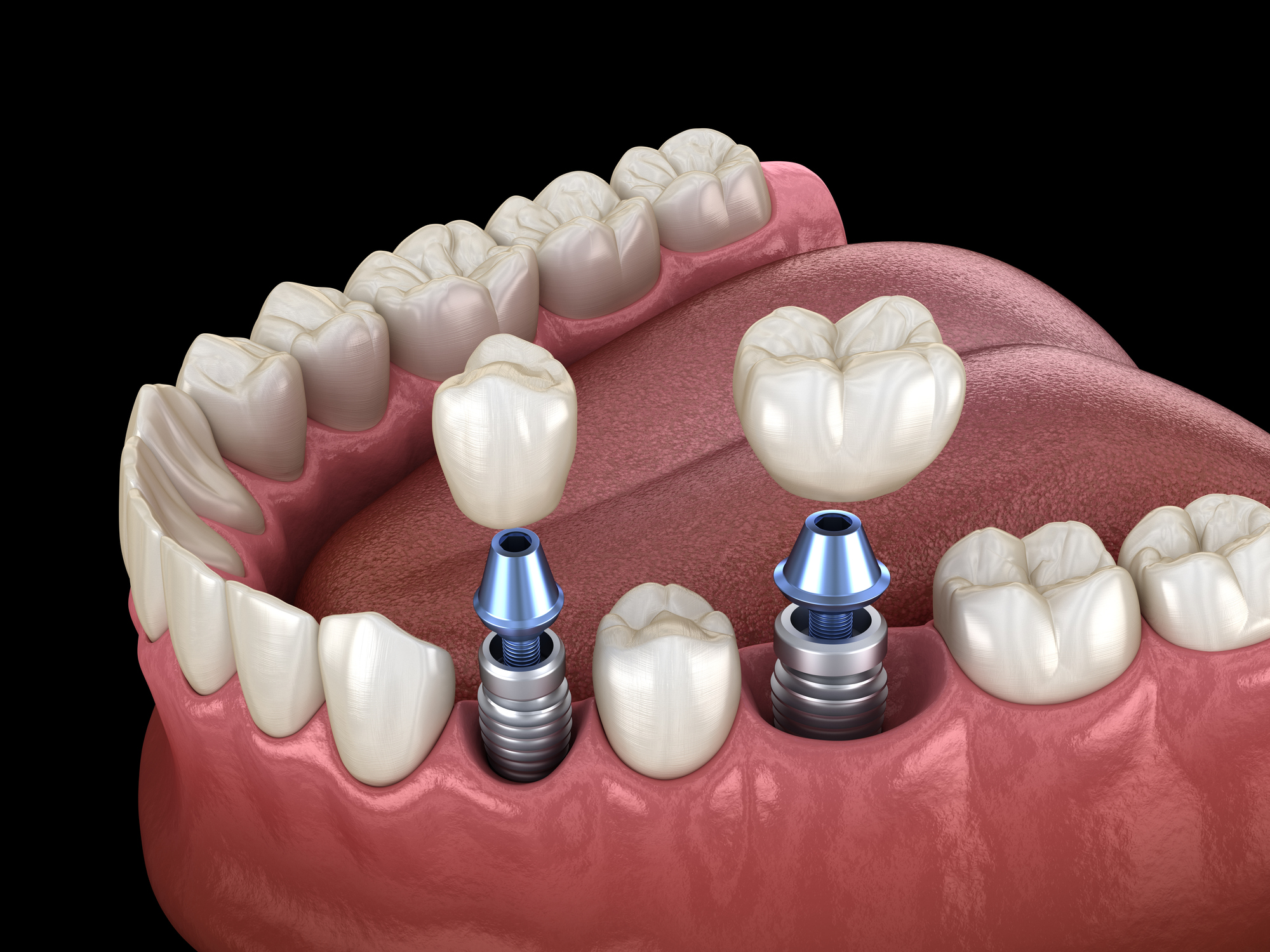What Does Dental Sense Mean?
What Does Dental Sense Mean?
Blog Article
Fascination About Dental Sense
Table of ContentsThe Greatest Guide To Dental SenseThings about Dental SenseThe Ultimate Guide To Dental SenseThe Main Principles Of Dental Sense
are clinical devices operatively implanted right into the jaw to recover a person's capacity to eat or their look. They give assistance for synthetic (fake) teeth, such as crowns, bridges, or dentures. When a tooth is lost because of injury or illness, an individual can experience complications such as fast bone loss, defective speech, or adjustments to eating patterns that lead to discomfort.Oral implant systems consist of an oral implant body and dental implant abutment and may additionally include an abutment fixation screw. Kids dental. The dental implant body is operatively put in the jawbone instead of the tooth's origin. The oral implant joint is usually attached to the dental implant body by the joint addiction screw and expands with periodontals into the mouth to support the affixed artificial teeth
(https://businesslistingplus.com/profile/dentalsense1/)Structure of The Dental Implant System picking oral implants, speak to your oral provider regarding the possible benefits and risks, and whether you are a candidate for the treatment. Things to think about: Your general health is an important aspect in identifying whether you are an excellent prospect for dental implants, the length of time it will require to heal, and for how long the implant might remain in location.
Smoking cigarettes may affect the healing process and reduce the long-lasting success of the implant. The healing process for the implant body may take several months or longer, throughout which time you usually have a temporary joint in area of the tooth. the dental implant treatment: Meticulously follow the oral hygiene instructions offered to you by your dental provider.
Getting The Dental Sense To Work
Implant failing can cause the need for another surgery to take care of or change the dental implant system. Restores the ability to chew Brings back cosmetic look Assists maintain the jawbone from diminishing as a result of bone loss Protects the health of the bordering bone and gums Assists keep nearby (nearby) teeth steady Enhances top quality of life Damages to bordering natural teeth throughout dental implant positioning Injury to the surrounding cells during surgical procedure, such as sinus opening Injury during surgery (for instance, crack of surrounding jawbone) Insufficient function, such as really feeling like the teeth do not bite together generally A sensation that the tooth hangs or twisting in position resulting from a joint screw loosening Implant body failure (looseness of the dental implant body) due to systemic infection, which might be most likely in people with unchecked diabetes as a result of neighborhood infection in bone and gum tissues supporting the implant body because of postponed healing, which may be more probable in patients that smoke Difficulty cleaning up the periodontals around the implant, leading to bad dental health Neglected periodontal illness Post-surgical tingling as a result of nerve impingement or damage Constantly inform healthcare carriers and imaging specialists that you have oral implants prior to any type of magnetic vibration imaging (MRI) or x-ray treatments.
FDA is not conscious of any type of adverse events reported for MRI or x-ray procedures this hyperlink with dental implants. Dental implants systems are normally constructed from materials that adhere to global agreement requirements of the International Company for Standardization (ISO) or ASTM International. These requirements have details of what makes a safe product.

A dental implant is a structure that changes a missing tooth. With screw-like gadgets, the surgeon inserts a dental implant right into the jawbone, and it acts as a support for an artificial tooth, called a crown.
Get This Report about Dental Sense
Some people are not qualified for dental implant surgical treatment. It is for dental cosmetic surgeons to run on people with: intense illnessuncontrollable metabolic diseasebone or soft tissue disease or infectionIf these problems are solved, an individual can have the surgical procedure. In, dental surgeons avoid running on individuals with: If people with any one of the above go through dental implant surgery, there is a greater risk of the implant failing.

Oral implant surgical procedure is an individualized process. It's not the same for everyone. The adhering to provides a general summary of what you can expect your dental professional, dental surgeon, periodontist or prosthodontist to do: Place the dental implant operatively. Give you time to recover. Attach the message and last crown, bridge or denture.
Next, your doctor will meticulously place the oral implant into your jaw. If your dental implant is near the front of your mouth, your dental expert will certainly make a short-lived tooth for you to use till you heal.
The Best Strategy To Use For Dental Sense
During the healing stage, your jawbone must fuse to the dental implant. This procedure can take anywhere from three to nine months.
As soon as your dental implant heals, your dental practitioner can affix the abutment (tiny port article) and your last reconstruction (crown, bridge or denture). This usually takes about one hour to finish and might require a second minor surgical treatment. You shouldn't really feel any discomfort during your oral implant treatment since your provider will use drug to numb your periodontals.
Report this page